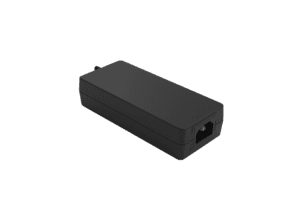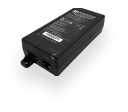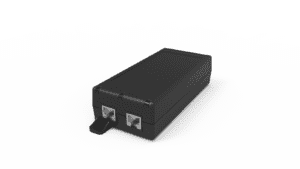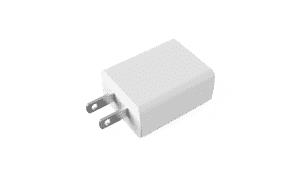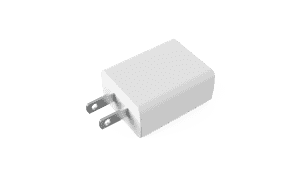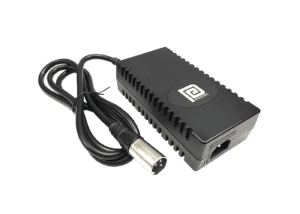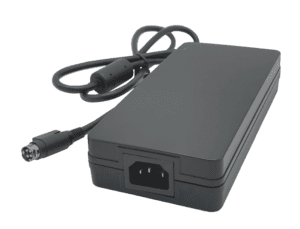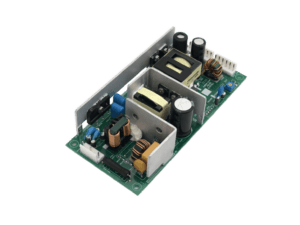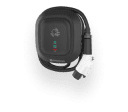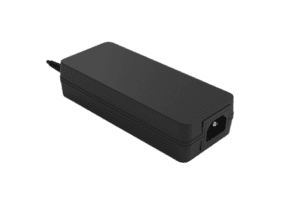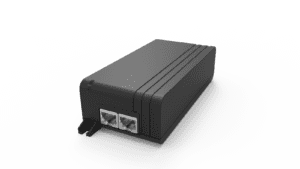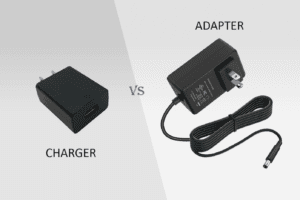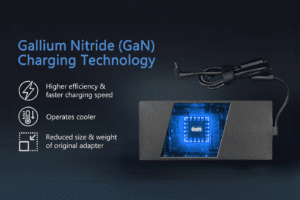BLOG
What Is the Best Modular Robot Charging Station for Multi-Robot Fleets?
QUICK LINKS

As industrial environments—from factories and warehouses to logistics hubs and smart campuses—scale up their use of autonomous mobile robots (AMRs) and automated guided vehicles (AGVs), one aspect of robot infrastructure is undergoing rapid transformation: the charging dock.
Gone are the days of single-purpose, fixed-location chargers. Today’s robotic ecosystems demand modular docking station designs that can evolve alongside growing, mixed-model fleets. Industrial OEMs are increasingly prioritizing modularity, scalability, and cross-compatibility in their charging systems to meet the diverse and dynamic needs of modern automation.
In this article, we explore the strategic reasons why industrial OEMs are embracing modular dock architectures, the features that make them work, and how this shift is driving smarter, more adaptable charging infrastructure for multi-robot fleets.
Why the Push Toward Modularity in Robot Docking Systems?
In multi-robot industrial environments, no two use cases are exactly alike. Robots vary in size, voltage, battery chemistry, task profile, and runtime—often within the same fleet. A modular docking station design allows OEMs and facility operators to standardize core infrastructure while customizing key features for each deployment.
Top Drivers for Modular Designs
- Growing use of heterogeneous robot fleets from multiple vendors
- Demand for scalable infrastructure as operations expand
- Increased cost pressure to reuse charging components across fleets
- Flexibility for different voltages, connectors, or physical form factors
Top Benefits
- Reduces design and manufacturing complexity across product lines
- Lowers maintenance and inventory costs with standardized components
- Enables rapid deployment and expansion with plug-and-play docking bays
- Future-proofs infrastructure for new robot SKUs or platform upgrades
Best Practices
- Separate power delivery, mechanical interface, and communication modules
- Design docks for field serviceability and hot-swapping
- Use smart firmware for adaptive charging behavior per robot model
- Plan for cross-robot compatibility from day one
Modular docking empowers OEMs to support growth, minimize friction, and deliver customer flexibility.
What Makes a Docking Station “Modular” in Industrial Robotics?
True modularity isn’t just about removable parts—it’s about system architecture that enables reuse, reconfiguration, and expansion without rebuilding from scratch.
Key Features of Modular Docking Systems
- Interchangeable charging modules supporting multiple voltages and currents
- Swappable mechanical guides for different robot dimensions
- Standardized base enclosures with configurable input/output routing
- Intelligent power distribution units (PDUs) for multi-bay stations
- Smart controller boards that adapt charging logic based on robot handshake
Real-World Examples
- A 4-bay dock where each port supports different AMRs (e.g., 24V and 48V bots)
- Replaceable magnetic pads, pogo-pin connectors, or wireless coils
- Modular wall- or floor-mount kits for flexible installation layouts
- Firmware that switches charge protocols based on robot ID or BMS query
Best Practices
- Maintain shared enclosures and thermal control across models
- Design communication protocols to support multi-robot handshaking
- Allow backward compatibility with legacy robot generations
- Validate cross-robot usage under field conditions before deployment
A modular dock should feel like one platform, many solutions—not a different dock for every SKU.
How Modular Docks Reduce Total Cost of Ownership (TCO)
One of the strongest motivators for modularity is cost reduction over time—not just in manufacturing, but in deployment, scaling, and maintenance.
Cost-Reduction Benefits
- Single manufacturing run for multiple client use cases
- Lower spare part SKUs across facilities
- Faster training and easier troubleshooting for technicians
- Easier upgrades via component-level replacements, not full swaps
Best Practices
- Use unified firmware across all dock types with configurable profiles
- Provide installation templates that fit various environments (indoor, outdoor, semi-industrial)
- Design docks for shipping in flat-pack or pre-assembled kits
- Offer module-level replacements for power, communication, or mechanical parts
OEMs save money by reducing the number of dock types they need to support—and operators save time by standardizing service protocols.
CLIENT'S QUOTE
"Phihong’s PoE solutions have made a huge difference for us! Our network runs more efficiently, and we’ve seen real cost savings. We couldn’t be happier!"
Supporting Multi-Robot Fleets with Interoperable Docking Designs
As facilities move toward mixed fleets—robots from different vendors, generations, and specs—the dock becomes a critical integration point.
Top Features for Cross-Fleet Docking
- Adaptive voltage regulation to support 24V, 36V, and 48V systems
- Smart handshake protocols (CANBus, RS-485, UART)
- Physical alignment mechanisms (magnetic, optical, mechanical)
- Interchangeable connector faces or pads (e.g., pogo pins, magnetic, inductive)
Benefits
- Reduces infrastructure duplication for different robot brands
- Simplifies IT and operations with shared charge reporting and logging
- Increases fleet agility—any robot can dock anywhere, anytime
- Prepares facilities for future robot models without needing new docks
Best Practices
- Partner with vendors using open or API-friendly charging standards
- Log dock use by robot ID to track wear, load, and usage across brands
- Incorporate fleet-level charging logic to prioritize high-usage units
- Consider fallback protocols when communication handshakes fail
A modular, interoperable dock becomes the unifying bridge between varied robots and a centralized charging ecosystem.
How Phihong USA Supports Modular Docking Station Design for OEMs
Phihong USA delivers modular, smart, and scalable charging platforms designed for industrial robot fleets. We help OEMs build flexible charging solutions that evolve with operations and support multi-robot use cases.
Our Capabilities Include:
- Wide-voltage AC-DC and DC-DC modules for multi-platform robot fleets
- Smart controllers with programmable firmware and adaptive BMS integration
- Interchangeable power bays, connectors, and dock enclosures
- Engineering services for thermal design, compliance (UL, CE), and edge firmware
- Support for IP-rated and mobile-ready dock modules
Whether you’re launching a new robot platform or unifying support across generations, Phihong provides the charging infrastructure that adapts to your roadmap.

Contact Our Team Today!
Our dedicated sales team and international partners are prepared to support you with your latest projects and initiatives globally.
Explore More with Phihong USA
As we conclude our exploration of PoE technology, it’s evident how these innovations are streamlining power and data integration across various industries. Phihong USA stands at the forefront of this technological advancement, offering a diverse range of power solutions designed to meet the evolving needs of modern industries.
Phihong USA’s extensive product lineup includes:
- Power over Ethernet (PoE) Solutions: Delivering reliable power and data transmission over a single cable, ideal for simplifying network installations and reducing costs.
- AC/DC Adapters and Power Supplies: From compact adapters to industrial-grade power supplies, Phihong provides solutions that ensure efficiency and reliability in various applications.
- Battery Chargers: Customizable chargers for lithium-ion and lead-acid batteries, supporting a wide range of power requirements for mobility and industrial applications.
- Medical Power Supplies: Specialized power solutions designed to meet the stringent requirements of the healthcare industry, ensuring safety and reliability.
Phihong USA is committed to innovation and excellence, continually developing products that meet the highest standards of performance and reliability. Their global reach and dedication to customer support make them a trusted partner in powering the future.
Here are some useful links to explore Phihong USA’s offerings further and bring in new potential clients:
Visit Phihong USA to discover how their advanced power solutions can support your business needs. Whether you’re looking to upgrade your network, or find reliable power supplies, Phihong USA has you covered.
By choosing Phihong USA, you’re partnering with a leader in power technology, ensuring your operations run smoothly and efficiently with top-tier power solutions. Contact Us today!
FAQ
Why are industrial OEMs focusing on modular docking systems?
Industrial OEMs need to support a growing and increasingly diverse range of robots, often within the same customer site. Modular docks help OEMs simplify logistics, reduce part numbers, accelerate deployment, and offer scalable solutions without redesigning infrastructure every time a new robot launches. It’s about future-proofing the ecosystem for rapid growth and customer flexibility.
Can a modular dock support robots with different battery voltages?
Yes—if designed correctly. Modular docks use programmable or interchangeable power modules to deliver different voltage outputs (e.g., 24V, 36V, 48V). Paired with smart firmware and BMS handshake support, these docks can automatically detect the incoming robot type and adjust charging parameters accordingly.
Are modular docks harder to maintain or more expensive?
No—in fact, they’re easier and more cost-effective over time. Because modular docks standardize common components, technicians only need to learn one system. Spare parts and updates are centralized, and maintenance becomes faster and more predictable. While initial engineering may be more complex, the long-term ROI is significantly higher.
Do modular docks support fleet expansion?
Yes—modular designs are ideal for scaling. Operators can add charging bays or swap power modules as the fleet grows or diversifies. Phihong offers modular charging platforms that can be mounted in arrays, connected to shared PDUs, and remotely monitored for performance and load balancing across the fleet.
How does Phihong support modular dock integration for OEMs?
Phihong USA provides:
- Customizable charging kits and modules
- Edge-compatible smart firmware for multi-robot communication
- Connector options for inductive, pogo pin, and magnetic solutions
Engineering collaboration on product architecture, compliance, and testing
We help OEMs build modular charging platforms that serve as long-term infrastructure, not one-off hardware.

